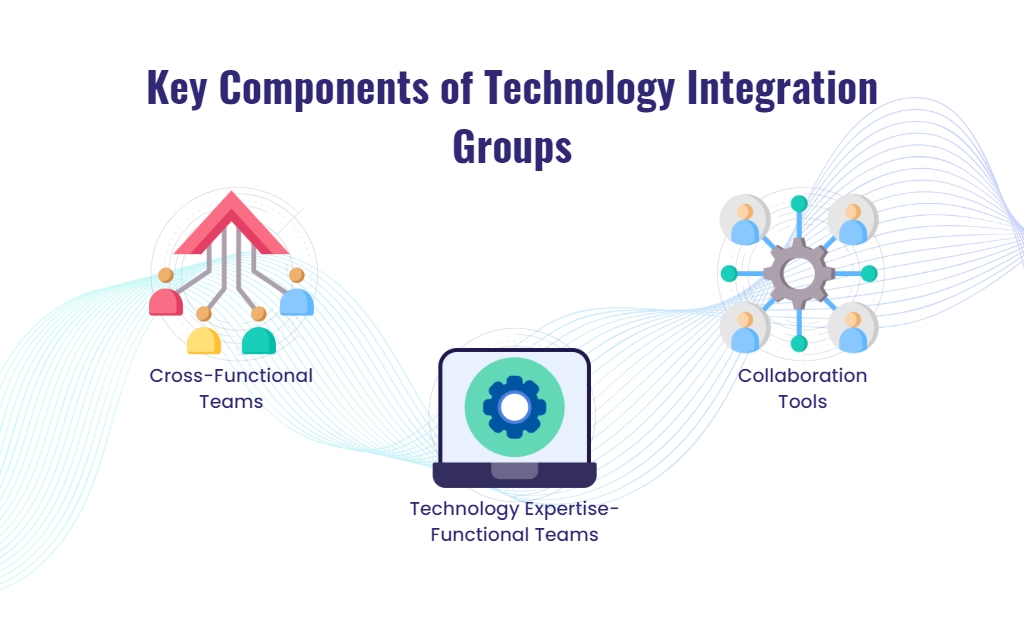In today’s fast-paced digital world, businesses are increasingly realizing that staying ahead means more than just adopting new technologies-it’s about integrating them seamlessly into their operations. Did you know that companies that fully integrate technology are 2.5 times more likely to report significant business success? This isn’t just a buzzworthy trend; it’s a critical component of modern business strategy. Enter technology integration groups, the unsung heroes driving synergy across departments and pushing companies toward unprecedented levels of efficiency and innovation.
Understanding Technology Integration Groups
So, what exactly are technology integration groups? At their core, these groups are specialized teams within an organization tasked with ensuring that new and existing technologies work together seamlessly. Their mission is simple: to align technology with business objectives, making sure that every tool, platform, and system supports the company’s overall strategy.
Key Components of Technology Integration Groups:
- Cross-Functional Teams: These groups are typically made up of members from various departments—IT, operations, marketing, and more. This diversity ensures that all perspectives are considered when integrating new technologies.
- Collaboration Tools: Effective communication and collaboration are essential. Technology integration groups often rely on advanced project management and communication tools to keep everyone on the same page.
- Technology Expertise: Of course, at the heart of these groups is a deep understanding of technology. Members are well-versed in the latest tech trends and know how to apply them to meet business needs.
Why Are These Groups Vital in Modern Business? In today’s tech-driven business environment, silos are the enemy of progress. Technology integration groups break down these silos by fostering collaboration and ensuring that technology serves the broader business goals. Without such groups, companies risk falling into the trap of disconnected systems and processes, which can lead to inefficiencies, miscommunication, and missed opportunities.

The Role of Technology Integration Groups in Enhancing Business Synergy
Now that we understand what technology integration groups are, let’s dive into how they are transforming business synergy.
Streamlining Operations: One of the primary ways these groups enhance synergy is by streamlining operations. By aligning technology with business goals, they ensure that all systems work together harmoniously. This alignment reduces redundancy, speeds up processes, and ultimately leads to more efficient operations. Imagine a company where the CRM system, inventory management, and customer service platforms are all seamlessly integrated. The result? Faster response times, reduced errors, and a more cohesive workflow.
Improving Communication and Collaboration: Technology integration groups are also instrumental in improving communication and collaboration across departments. They break down the barriers that often exist between different areas of a business, enabling better teamwork and a more unified approach to achieving company goals. For instance, by integrating communication tools with project management platforms, teams can easily share updates, track progress, and collaborate on tasks—regardless of their physical location.
Driving Innovation: In today’s competitive landscape, innovation is key to staying ahead. Technology integration groups drive innovation by introducing new technologies that can create competitive advantages. Whether it’s adopting AI-driven analytics tools or implementing automation software, these groups ensure that businesses are always on the cutting edge.
Enhancing Decision-Making: Finally, technology integration groups play a crucial role in enhancing decision-making. By integrating various data sources and systems, they provide real-time insights that empower leaders to make informed decisions quickly. In a world where the ability to pivot and adapt is crucial, having access to integrated data can be a game-changer.

How Successful Technology Integration in Business Looks
To see these concepts in action, let’s look at a couple of real-world examples.
Case Study 1: A leading retail company faced challenges with disconnected systems that led to inventory mismatches and delayed order fulfillment. By forming a technology integration group, the company was able to align its inventory management, CRM, and e-commerce platforms. The result was a 30% reduction in order processing time and a significant improvement in customer satisfaction.
Case Study 2: A financial services firm sought to gain a competitive edge by leveraging AI. Its technology integration group introduced AI-driven analytics tools that provided deeper insights into customer behavior. This innovation led to more personalized services and a 20% increase in customer retention rates.
Key Takeaways: These case studies highlight the transformative power of technology integration groups. Whether it’s streamlining operations or driving innovation, these groups are essential for any business looking to thrive in today’s digital age.
Challenges and Solutions in Implementing Technology Integration Groups
Of course, forming and maintaining a technology integration group isn’t without its challenges.
Common Challenges:
- Resistance to Change: Employees may resist new technologies or processes.
- Lack of Resources: Not all companies have the budget or personnel to form these groups.
- Communication Barriers: Ensuring that all departments are on the same page can be difficult.
Effective Solutions:
- Leadership Support: Strong leadership is crucial for overcoming resistance.
- Clear Goals: Setting clear, achievable goals can help align the group’s efforts.
- Continuous Training: Regular training sessions can keep team members updated on the latest technologies and best practices.
Importance of Adaptability: In a rapidly changing technological landscape, adaptability is key. Technology integration groups must remain flexible and open to new approaches to stay ahead of the curve.
The Future of Technology Integration Groups in Business
Looking ahead, technology integration groups will continue to play a vital role in shaping the future of business.
Emerging Trends: As technology continues to evolve, these groups will need to keep pace with trends like AI, machine learning, and automation.
The Role of AI and Automation: AI and automation are becoming integral to technology integration. These tools can further enhance business operations by providing deeper insights and automating repetitive tasks.
Long-Term Benefits: Investing in technology integration groups offers long-term benefits, including sustained competitive advantage and continuous innovation. Businesses that embrace this approach will be well-positioned to thrive in the years to come.
Conclusion
Technology integration groups are more than just a trend; they are transforming business synergy by streamlining operations, enhancing collaboration, and driving innovation. As we move further into the digital age, the importance of these groups will only grow. If your business hasn’t yet embraced the power of technology integration, now is the time to do so. The future of your company’s success may depend on it.

